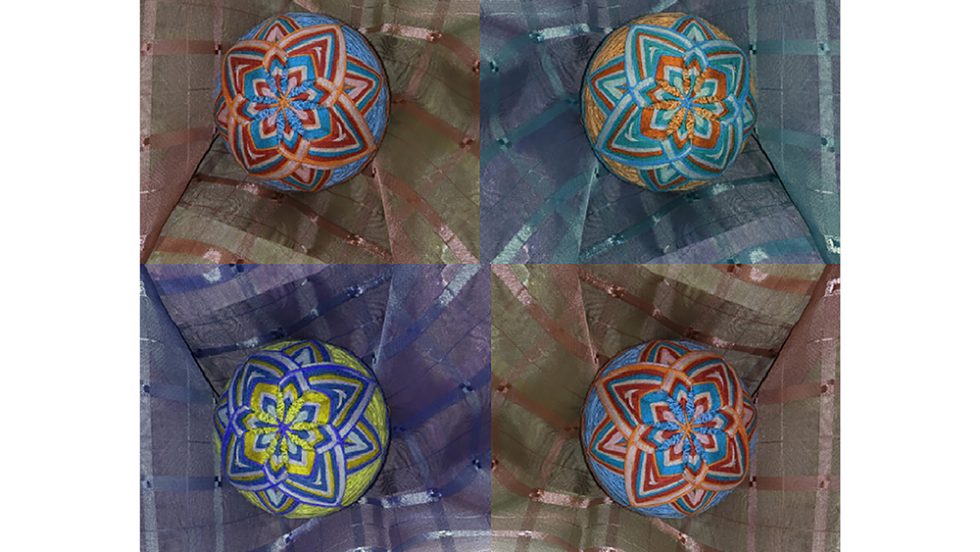
Carl Giuffre, PhD, assistant professor of mathematics and computer science, and Lee Stemkoski, PhD, professor of math and computer science, explored the intersection of art and mathematics in Japanese temari.
Where most people would see a colorful ball of thread, Carl Giuffre, PhD, assistant professor of mathematics and computer science, and Lee Stemkoski, PhD, professor of mathematics and computer science, see an endless series of geometrical equations waiting to be solved. In a recent article, “Virtual Temari: Artistically Inspired Mathematics,” published in the July 2020 issue of the Journal of Humanistic Mathematics, the two describe how they built a three-dimensional simulation of the process of creating temari, a traditional Japanese art form in which layers of colored threads are wound around a small ball in intricate designs.
Dr. Giuffre first encountered temari while teaching in the mathematics department at St. Mary’s College of Maryland. Mesmerized by the striking hues and geometric patterns, he spent about 40 hours creating one of his own. At Adelphi, he showed it to Dr. Stemkoski, who was enthusiastic about the art form’s mathematical possibilities. “I’ve worked with computer graphics a lot, trying to engineer particular patterns,” Dr. Stemkoski said. “I thought, ‘There’s an interesting challenge. Can we create a mathematical function that reproduces all the hard work that goes into making temari?'”
They got to work developing an interactive computer program that lets users create their own virtual balls of string. The two hit a few bumps along the way, as some of their early attempts looked like “exploded spaghetti,” according to Dr. Giuffre. After creating multiple prototypes, the final version was called EMARI: Exploratory Mathematical and Artistic Rendering Interface, a web-based application that can be used by amateurs and professionals alike.
Fabric art has often been used to demonstrate complex mathematical concepts. For instance, knitting has been used to illustrate recursion, crocheting to explore hyperbolic geometries, and quilting as a medium for symmetry samplers. In recent years, temari—many of which are inspired by mathematical phenomena such as polyhedra and parametric curves—have been used in discrete mathematics courses to describe permutations.
Dr. Giuffre and Dr. Stemkoski, however, wanted to go beyond using temari to simply demonstrate spherical geometries. “Since we’re both educators, we wondered if we could put an educational spin on this project,” Dr. Stemkoski said. “Could we also empower other people—be they students or artists or mathematicians—to create temari as well?”
Although the application has educational uses in the classroom, it also offers users the simple “aesthetic joy of creating a colorful composition.” Dr. Stemkoski is hopeful that others will expand on their work. “This is just the first step,” he said. “We showed that it is possible to create an approximation of the temari art form. Maybe this opens the door for others as well.” Their article concludes, “… recalling that temari are given as gifts, we like to think of EMARI as our gift to the mathematical and artistic communities, and we hope that these efforts further strengthen the beautiful bridges that connect these two communities.”
According to Drs. Giuffre and Stemkoski, the project—which integrates mathematics, computer science and the visual arts—was only made possible by their department’s strong interdisciplinary focus. “One of the reasons I came to Adelphi is because it’s a joint department of math and computer science,” Dr. Stemkoski said. “I hate to put myself in one box: I don’t want to be just a mathematician or just a computer scientist. Here I can go back and forth between those two roles.”
Their next project together, still in its early stages, also combines mathematics and computer science. It involves virtual reality, a technology whose full capabilities researchers are only beginning to leverage. “This is new territory,” said Dr. Giuffre. “We have a chance to be at the forefront of this research.”